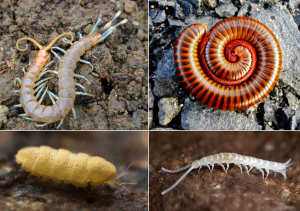Myriapods are a poorly proven group. At this point only one proving and one trituration have been done of Chilopods, leading to an extreme lack of knowledge of the homeopathic characteristics of this group.
At this time any provings or triturations of any members of the Myriapods would be very useful. Provings of Diplopoda, Pauropoda, Symphyla, And Arthropleuridea fossils have a particularily high priority, having no provings or available remedies.
In terms of proving suggestions, Ommatoiulus moreleti, an Iberian millipede now introduced and invasive in Australia would be an excellent candidate, as would Xonobolus carnifax a pest species in Sri Lanka which infests thatched roofs. Other species of Millipedes such as Illacme plenipes, with 750 legs, or many of the species which are used by primates as topical insect repellants. Another Genus of Millipedes, Motyxia, displays bioluminesce which likely serves as a defense mechanism[i].
Many centipede species would be interesting remedies. The house centipede Scutigera coleoptrata, is one of the most frequent. Another Genus, Lithobius, is used by the yorube for Kidney and Leg problems. Other species of Chinese Medicinal Centipede, such as Scolpendra subspines would also be useful.
As well, a fossil remedy made from the famous specimen of Pneumodesmus newmani, the earliest known terrestrial animal, could be made without damaging the fossil, and would provide a fascinating insight into the early evolution of terrestrial animals.
[i] Marek, et al. Bioluminescent aposematism in millipedes. Current Biology. Vol 21 Issue 18. Pp R680-1. Sept 2011.
Image Source: https://commons.wikimedia.org/wiki/Category:Myriapoda#/media/File:Myriapod_collage.png.